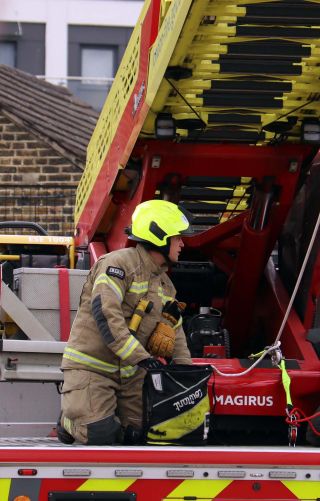Compassion Fatigue
Compassion Fatigue Awareness Project
Supporting the mental health of caregivers through education.
Posted July 31, 2024 Reviewed by Monica Vilhauer Ph.D.
Key points
- Caregiving and helping are much-needed and fulfilling careers, but can have negative mental health impacts.
- Self-care for caregivers supports their physical, psychological, and spiritual health.
- The Compassion Fatigue Awareness Project educates about symptoms, causes, and strategies to promote wellness.
We thank those who help and care for others. Who will help them?
Medical staff—including doctors, nurses, midwives, veterinarians, and their accompanying colleagues—deal daily with the ecstasies and pains of life and death, both slow and fast. First responders—including law enforcers, firefighters, and ambulance personnel—place their own lives at risk in order to save others, regularly witnessing gruesome scenes. Humanitarian aid workers may deal with families who have nothing except their clothes and their lives.
It is only human to become overwhelmed and tired of it all. Our mental health, just like our physical health, has limits to the grief and trauma we can take. Distress from helping others is called “compassion fatigue”. This distress can manifest physically, psychologically, and spiritually.

The Compassion Fatigue Awareness Project
Patricia Smith founded the Compassion Fatigue Awareness Project in 2002 to provide training, workshops, materials, and inspiration about compassion fatigue and how to deal with it. Now based in Friday Harbor, Washington, USA, she switched careers from California journalism, because “I wanted to do something that filled not only my heart, but my soul as well. I became the training and development manager for a very large county animal shelter. I was only there for two weeks and became highly aware of the underbelly of the work. My colleagues were all suffering from high levels of stress, burnout, and compassion fatigue. I knew, as a trainer, I had to do something to help.”
As a Certified Compassion Fatigue Specialist and Educator, she has published five books and travels nationally and internationally speaking about and training people in recognizing and managing compassion fatigue. Self-care is immensely important. Achieving and normalizing it, especially taking time away from work when there are more lives to save and a continuous stream of people and animals suffering, is not always easy for those embroiled in decision-making at the worst times of strangers’ lives.
While culture is changing, some helping careers used to be based in machoism, with the expectation of being tough and managing alone anything that happens during work. If you can’t handle the heat, then get out of the kitchen. This is certainly not the case for everyone or all the jobs.
Even so, support mechanisms used to be entirely absent. Workers would go home, with no outlet except to transfer the stress and distress to their families who would not understand what was wrong or how to respond.
For some, being in the thick of a crisis, and caring for people or animals in need minute-by-minute, would feel more comfortable and fulfilling than spending time with partners and children. But there was no downtime, because somewhere, something might happen requiring a heroic response. Asking for help for oneself was not an option.
Among other awards, Patricia’s “Healing Arts” program was recognized when she worked as the program director at Ronald McDonald House in Stanford, California. She explains, “The Healing Arts are all encompassing, holistic. They engage body, mind, and spirit in tandem. Healing Arts call into play the five senses that color our earthly presence: hear, smell, see, taste, touch. With these five senses at work, we heal naturally, both at the superficial level known as enjoyment and pleasure, but also at a deep, life-altering, cellular level where trauma dwells. The Healing Arts include art, music, writing and reading, meditation and mindfulness, dance/movement/drama, nature, gardens and gardening, pet therapy, and the culinary arts.”
Employers and employees contribute
To move this ethos forward, material offered through the Compassion Fatigue Awareness Project includes “The Caregiver’s Bill of Rights” and “Ten Laws” for “Governing Healthy Caregiving”, “Governing a Healthy Workplace”, “Governing Healthy Change”, and “Governing Authentic, Sustainable Self Care”. While it might seem obvious “to socialize, maintain my interests, and sustain a balanced lifestyle”, or for “management to monitor workloads”, we are too well aware how they frequently lapse—or how employment circumstances do not permit them.
The latter is particularly dangerous, since staff become dissatisfied and approach burnout, putting themselves and those for whom they care at serious risk of harm. Employers and managers ought to be aware of and redress compassion fatigue as much as employees, especially frontline staff.
And so the Compassion Fatigue Awareness Project provides self-care tests, reading material, other organizations, advice, and direction. As Patricia says, “The important thing to remember is it’s never too late to learn about compassion fatigue, stress, and burnout and strategies to promote wellness work. Supporting each other, and most notably ourselves, will allow us to enjoy higher levels of compassion satisfaction and lower our compassion fatigue, stress, and burnout levels. And this will help us to continue doing the good work that our world needs so badly.”
References
Smith, P. 2009. To Weep for A Stranger: Compassion Fatigue in Caregiving. CreateSpace Independent Publishing Platform.
Smith, P. 2012. Compassion Satisfaction: 50 Steps to Healthy Caregiving. CreateSpace Independent Publishing Platform.
Smith, P., Madrigal, I.P. 2020. Stress, Compassion Fatigue and Burnout Handling in Veterinary Practice. Edra.


